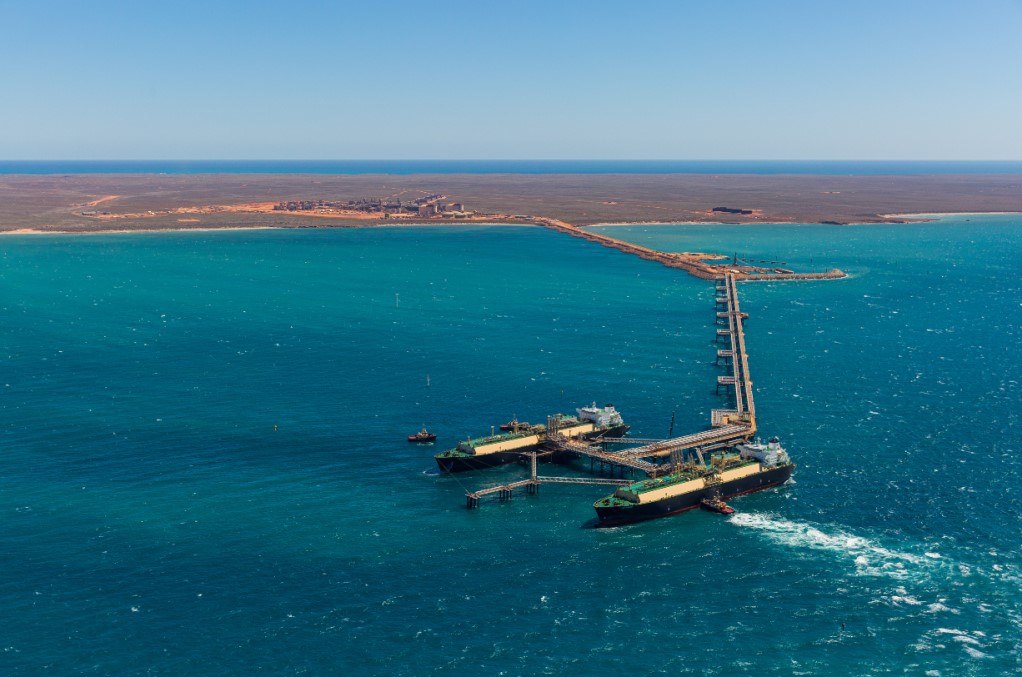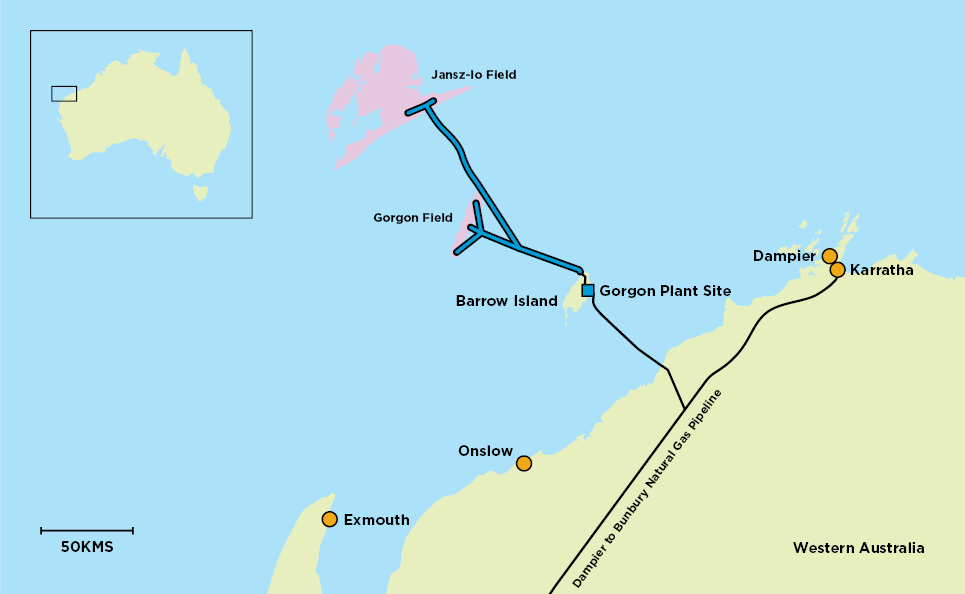This story requires a subscription
This includes a single user license.
Launched in 2016, the Gorgon LNG plant has three trains and a production capacity of about 15.6 mtpa.
The project is a joint venture of Chevron (47.3 percent), ExxonMobil (25 percent), Shell (25 percent), Osaka Gas (1.25 percent), MidOcean Energy (1 percent), and also Jera (0.417 percent).
The first stage of Gorgon was the Gorgon foundation project (GFP), which included constructing the Gorgon gas treatment plant (GTP) and domestic gas plant on Barrow Island and developing the Gorgon and Jansz–Io offshore gas fields.
Next phase of Gorgon
The initial Gorgon approvals process envisaged the development of other backfill fields in the Greater Gorgon area.
A backfill field is a supply of natural gas that is required to maintain the throughput to an operating facility.

“On behalf of the Gorgon Joint Venture, Chevron Australia has submitted an offshore project proposal to progress the development of offshore gas fields in the Greater Gorgon area,” a Chevron spokesperson told LNG Prime on Friday.
“As Gorgon and Jansz-Io fields deplete over time, developing backfill fields represents the next phase of the Gorgon project – helping to maintain gas production for Western Australia and the broader Asia Pacific region, and supporting the ongoing economic benefits that reliable gas supply brings,” Chevron’s spokesperson said.
“The development of backfill fields was envisaged in the initial Gorgon project approvals and will not increase the life or capacity of the current Gorgon gas processing facilities beyond existing approvals,” the spokesperson added.
The submission of the proposal to Australian offshore regulator Nopsema marks the start of the public comment process.
The development proposes to tie seven backfill fields into the existing subsea gathering infrastructure, which connects the two currently operational gas fields, Gorgon and Jansz-Io, with the Gorgon gas facility, according to the document.
Staggered development
Chevron said in the document that field development will be staggered, so all fields will not be developed in a single campaign.
The seven fields are located about 200 kilometers north of Onslow and 100 kilometers north-northeast of Barrow Island, at depths of 150 meters to 1,400 meters.
Most of the fields are in water depths greater than 800 meters.
The fields are: Chandon, Chrysaor, Dionysus, Eurytion, Geryon, Semele, and West Tryal Rocks which are located across WA-5-R, WA-14-R, WA-15-R, WA-20-R, WA-21-R, WA-22-R, WA-53-R, WA-75-R, and WA-76-R.
The operational area includes a five-kilometer buffer around the most conservative indicative location of the backfill fields’ infrastructure.

Development of first field to start in 2026
Planned activities include conducting geotechnical and geophysical surveys, drilling wells, installing a subsea gathering network that connects the wells to the existing Gorgon and Jansz-Io pipelines.
The activities also include commissioning and start-up, operating the facilities including inspection, maintenance and repair, operating vessels, helicopter and remotely operated vehicles, and decommissioning, according to Chevron.
No permanent structures will be above the sea surface.
Chevron expects to start the development of the first field in 2026, while the order of the development of the seven fields has not yet been finalized.
However, subject to relevant approvals, Geryon and Eurytion have been earmarked as the next fields to be developed and are anticipated to be co-developed and use common infrastructure.
Geryon and Eurytion drilling is expected to start in the third quarter of 2026, while installation and commissioning is expected in the third quarter of 2027, it said.
Operations are slated for 2028.
The subsequent fields will likely be developed post start up of G&E with timing of the respective fields based on the production outcomes of the fields sequenced before it i.e. as each field declines a new field(s) will be developed into the Gorgon and Jansz trunklines, Chevron said.
The activity durations for the individual fields will be similar to the durations presented for G&E except for installation activities at Chrysaor & Dionysus which may take longer (15 months) due to the presence of the scarp, Chevron said.
Additionally, West Tryal Rocks may have an operational life up to 30 years, it said.

